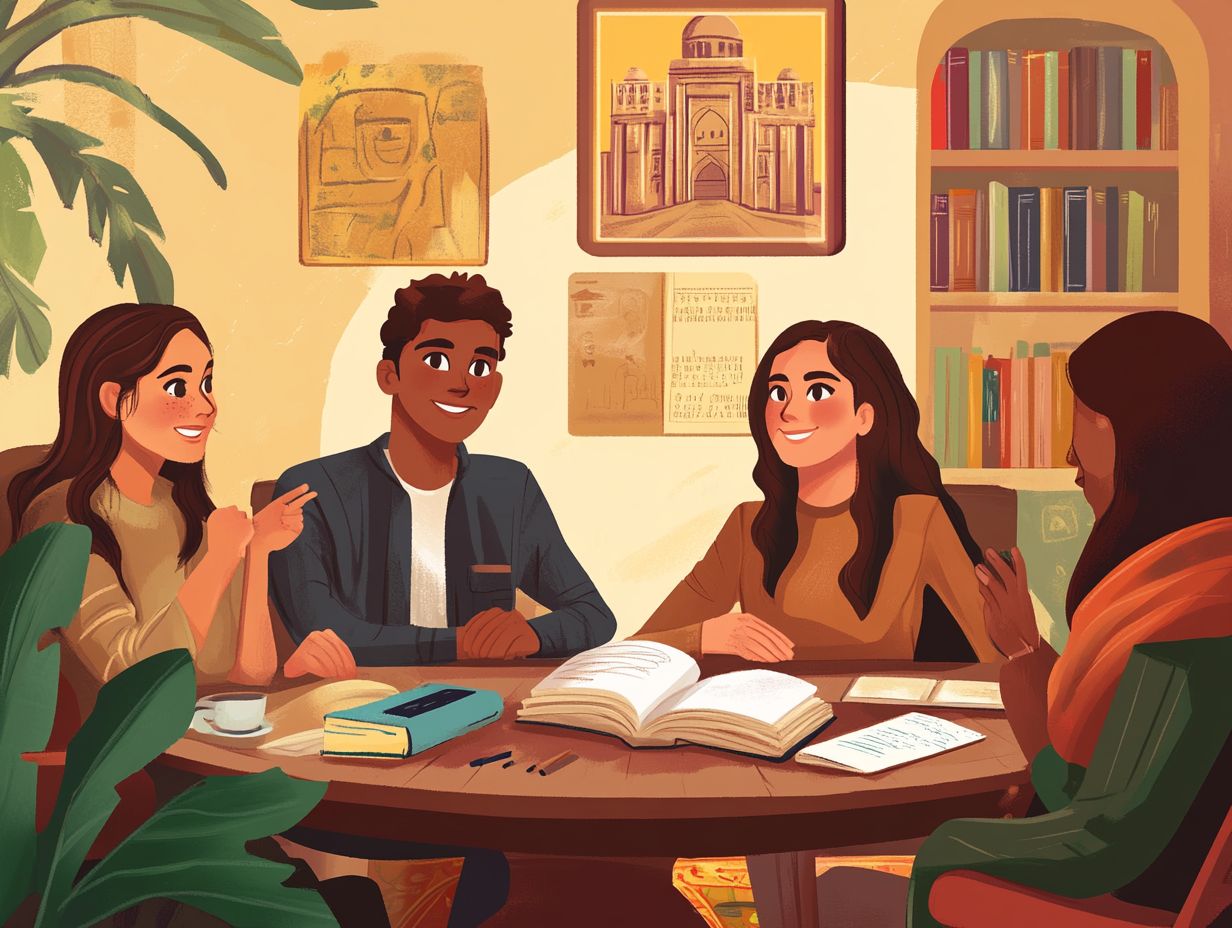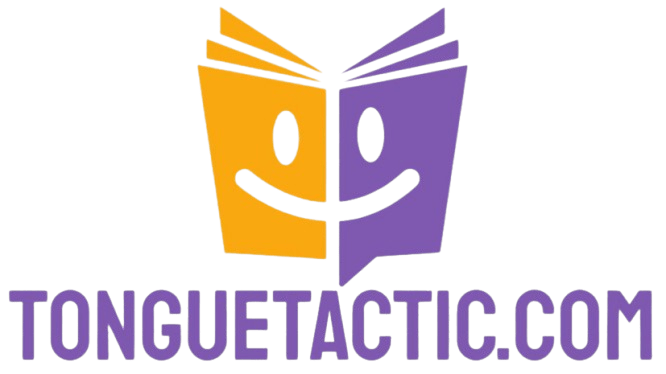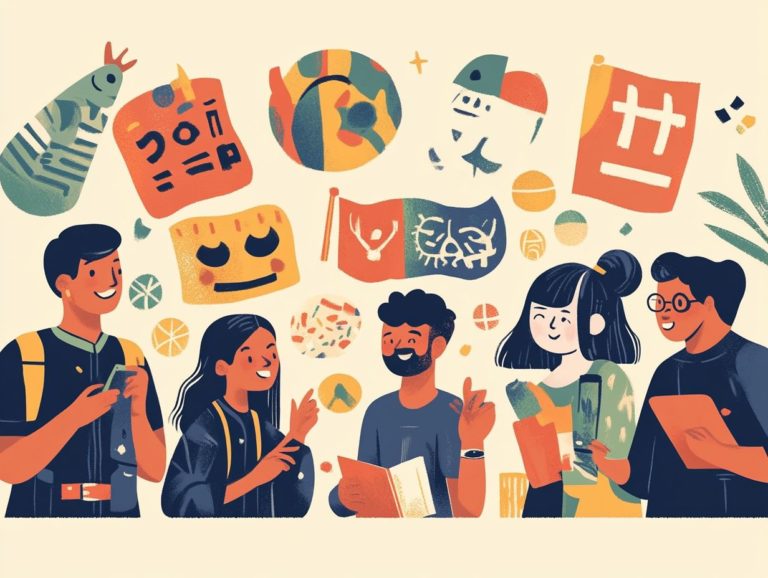5 essential cultural competencies for language learners
In today s interconnected world, mastering a language goes beyond vocabulary and grammar; it demands a deep understanding of the cultures that inform its use.
This exploration delves into five critical cultural competencies that every language learner should embrace. By cultivating self-awareness and honing the art of active listening, you not only enhance your language proficiency but also foster genuine connections across diverse cultures.
Embark on this journey to discover the significance of cultural competence and how it can enrich your language learning experience.
Contents
- Key Takeaways:
- 1. Understanding the Importance of Cultural Competence
- 2. Developing Self-Awareness
- 3. Learning Basic Cultural Etiquette
- 4. Practicing Active Listening and Empathy
- 5. Being Open and Respectful to Different Perspectives
- How Can Cultural Competence Benefit Language Learning?
- What Are the Common Challenges in Developing Cultural Competence?
- How Can Language Learners Improve Their Cultural Competence?
- What Are Some Cultural Resources for Language Learners?
- How Can Cultural Competence Enhance Cross-Cultural Communication?
- What Are the Long-Term Effects of Ignoring Cultural Competence in Language Learning?
- Frequently Asked Questions
- What are the 5 essential cultural competencies for language learners?
- Why are these cultural competencies important for language learners?
- Can these cultural competencies be learned?
- How can language learners develop cultural awareness?
- What role does empathy play in cultural competence?
- How can language learners become more open-minded?
Key Takeaways:

Cultural competence is crucial for effective language learning.
Self-awareness helps language learners understand their own cultural biases.
Learning cultural etiquette can avoid misunderstandings in cross-cultural communication.
1. Understanding the Importance of Cultural Competence
Cultural competence is key in education, enriching both teaching and learning. It is vital for cultivating inclusive environments that celebrate individual differences and enhance educational outcomes.
By teaching that respects different cultures, you recognize the diverse backgrounds of your students and actively challenge cultural assumptions that might impede effective communication and engagement.
This approach, championed by experts like Dr. Cheryl Irish at Indiana Wesleyan University, is crucial for implementing practices that address the needs of all learners.
When you integrate methods that honor and validate various cultural perspectives, you create a dynamic and engaging classroom experience.
For example, Dr. Irish’s research illustrates that incorporating culturally relevant materials captures student interest and fosters a sense of belonging. This deeper engagement often translates into improved academic performance, as students who feel understood and valued are more inclined to participate actively in discussions.
By preparing students with essential skills to navigate and appreciate a multicultural society, you set them up for success in an increasingly interconnected world.
2. Developing Self-Awareness
Developing self-awareness is an essential step in your journey to becoming a culturally competent educator. It requires a deep dive into your own cultural biases and assumptions that may affect your teaching practices.
This path often involves reflecting on personal experiences and recognizing the influence of your upbringing while engaging with diverse communities.
As you explore your background, you may uncover subtle nuances that shape your perspectives and teaching methods. This newfound awareness enriches your interactions with students and allows you to appreciate individual differences in your classroom.
By creating an inclusive environment, you can tailor your instructional strategies to accommodate varied learning needs, ultimately enhancing engagement and comprehension for all your students.
3. Learning Basic Cultural Etiquette
Understanding basic cultural etiquette is essential for engaging in effective intercultural communication. It allows you to navigate the intricacies of diverse classrooms while avoiding misunderstandings stemming from cultural assumptions.
By recognizing different communication styles, such as direct versus indirect approaches, and understanding gestures that vary from one culture to another, you can create a more inclusive environment.
For example, a simple nod may hold different meanings across cultures sometimes signaling agreement, other times merely acknowledging a point. Being aware of social norms, such as personal space preferences or levels of formality, enables you to connect more meaningfully with your students.
This cultural awareness enhances mutual respect and lays the groundwork for effective teaching strategies tailored to meet diverse learning needs.
4. Practicing Active Listening and Empathy

Practicing active listening and empathy is essential for you as an educator aiming to cultivate a safe and supportive learning environment. This is especially important when working with English Language Learners and students from diverse backgrounds.
These skills help build strong relationships between you and your students. They also allow you to understand the unique perspectives and experiences that shape each learner’s journey.
When you actively engage in listening, you absorb not only the spoken words but also the non-verbal cues. This enables you to respond sensitively to your students’ needs. For instance, giving wait time after asking a question allows your students to formulate their thoughts and feel valued, which significantly enhances their participation.
By creating lessons that respect and incorporate diverse backgrounds, you can further show empathy and encourage your students to express their identities. This approach boosts engagement and fosters a community built on respect and understanding.
5. Being Open and Respectful to Different Perspectives
Embracing openness and respect for diverse perspectives is fundamental for creating curricula that truly enable you as a student. It recognizes the value of your unique experiences and background.
This approach fosters a genuine sense of belonging and sharpens your critical thinking skills as you engage with a variety of viewpoints.
When you’re exposed to a wider range of ideas, you re prompted to analyze, question, and appreciate the complex world around you. Such an environment promotes student-centered learning, making you feel seen and heard, which leads to richer classroom discussions.
This exchange of ideas strengthens relationships with your peers and nurtures a more inclusive atmosphere, cultivating empathy and understanding among students from diverse backgrounds.
How Can Cultural Competence Benefit Language Learning?
Cultural competence plays a crucial role in enhancing your language learning experience. It fosters an inclusive environment that boosts engagement and aids in critical skills like reading comprehension, vocabulary development, and connecting language learning with local culture.
When educators embrace teaching methods that respect and incorporate your culture, lessons become relatable and contextually relevant. For example, sharing stories and examples from your own culture can deepen your understanding and ignite your interest in the material.
Research shows that when English Language Learners see their cultures reflected in the curriculum, it helps with language retention and cultivates a sense of belonging. This approach can skyrocket your test scores and overall academic performance, as you become more motivated and connected to your educational journey.
What Are the Common Challenges in Developing Cultural Competence?
Developing cultural competence presents various challenges, especially when confronting ingrained cultural assumptions. Engaging in critical reflection is necessary to create an inclusive classroom environment.
These assumptions, shaped by your personal experiences and societal influences, can act as barriers to effective communication and understanding among a diverse student body. If your exposure to different cultures has been limited, these challenges may intensify, fostering misconceptions and hesitance to embrace diversity.
You stand to gain significantly from engaging in critical reflection. This involves questioning your own biases and broadening your cultural horizons.
By adopting proactive strategies like attending professional development workshops, participating in collaborative learning experiences, and getting involved in the community you can cultivate a deeper appreciation for varied perspectives. In doing so, you enrich the educational experience for everyone involved.
How Can Language Learners Improve Their Cultural Competence?

You can elevate your cultural competence by honing your active listening skills and engaging in intercultural communication. Additionally, applying 5 strategies for effective language practice can be essential tools for forging connections with peers from diverse backgrounds.
By immersing yourself in varied environments and actively participating in discussions, you can sharpen your listening abilities. This makes it easier to grasp different perspectives.
Engaging in activities like role-playing scenarios or group conversations can deepen your awareness and appreciation of cultural nuances.
Developing advanced language skills is crucial for this journey. It enables you to navigate complex language structures and express yourself more effectively in different contexts.
These activities boost your communication skills and build empathy and respect for different cultures.
What Are Some Cultural Resources for Language Learners?
Cultural resources such as literature, music, and art can be invaluable tools for you as a language learner. They provide rich context and enhance your educational journey while promoting a culturally sensitive curriculum.
These resources introduce you to new vocabulary and grammatical structures. They also offer profound insights into the beliefs, values, and traditions of diverse communities.
For instance, immersing yourself in novels from various cultures allows you to experience different narrative styles and perspectives.
Listening to music from around the globe highlights idiomatic expressions and cultural references that deepen your understanding.
Engaging with visual art can spark discussions around themes that resonate across cultures, fostering both empathy and appreciation.
By learning through these mediums, you enhance your language acquisition and cultivate the cultural competence essential for meaningful communication. For more insights, check out these 7 tips for balancing language and culture in our interconnected world.
How Can Cultural Competence Enhance Cross-Cultural Communication?
Cultural competence is essential for enhancing cross-cultural communication. It encourages you to critically analyze your own cultural biases while honing your active listening skills, key to fostering understanding. Exploring resources like the 5 must-visit cultural institutions for language learners can further enrich this experience.
By acknowledging the diverse perspectives that others bring to the table, you can create an atmosphere where meaningful exchanges flourish. This heightened awareness helps bridge gaps and emphasizes the importance of empathy in your interactions.
Effective communication builds trust and significantly reduces misinterpretation, a common source of conflict. Cultivating cultural competence equips you with the tools necessary for thoughtful engagement, paving the way for stronger relationships and a more cohesive community.
What Are the Long-Term Effects of Ignoring Cultural Competence in Language Learning?
Ignoring cultural competence in language learning can have long-term detrimental effects on your educational outcomes. To enhance your experience, consider implementing 5 essential tips for language immersion success, as it helps to break down cultural assumptions and underscores the value of diversity in your classroom.
When you overlook the importance of fostering an inclusive environment, you risk disengaging students who may feel marginalized or misunderstood. This detachment can hinder their academic performance.
Without integrating cultural competence, you miss out on significant opportunities for cross-cultural exchange and understanding. This prevents learners from fully appreciating the richness that diverse perspectives bring to classroom discussions.
To ensure sustainable success, it s essential to weave cultural competence into the educational framework. This ensures that all students feel valued and empowered to share their unique experiences.
Frequently Asked Questions

What are the 5 essential cultural competencies for language learners?
The 5 essential cultural topics for language learners include cultural awareness, communication, empathy, adaptability, and open-mindedness.
Why are these cultural competencies important for language learners?
Cultural competencies are essential for language learners. They help understand not only the language but also the culture, and 5 ways to incorporate culture in language learning can greatly enhance communication and relationships with native speakers.
Can these cultural competencies be learned?
Yes, cultural competencies can be learned. By actively seeking to understand and appreciate different cultures, individuals enhance their skills, and applying proven strategies to boost language learning can further enrich this process.
How can language learners develop cultural awareness?
You can easily develop cultural awareness through various activities. Studying abroad, reading about cultures, and interacting with diverse people can help.
What role does empathy play in cultural competence?
Empathy is vital for cultural competence. It helps individuals understand and respect others’ perspectives, improving communication and relationships.
How can language learners become more open-minded?
Language learners can become more open-minded by practicing tolerance. Challenging biases and engaging with diverse perspectives enhances understanding.




